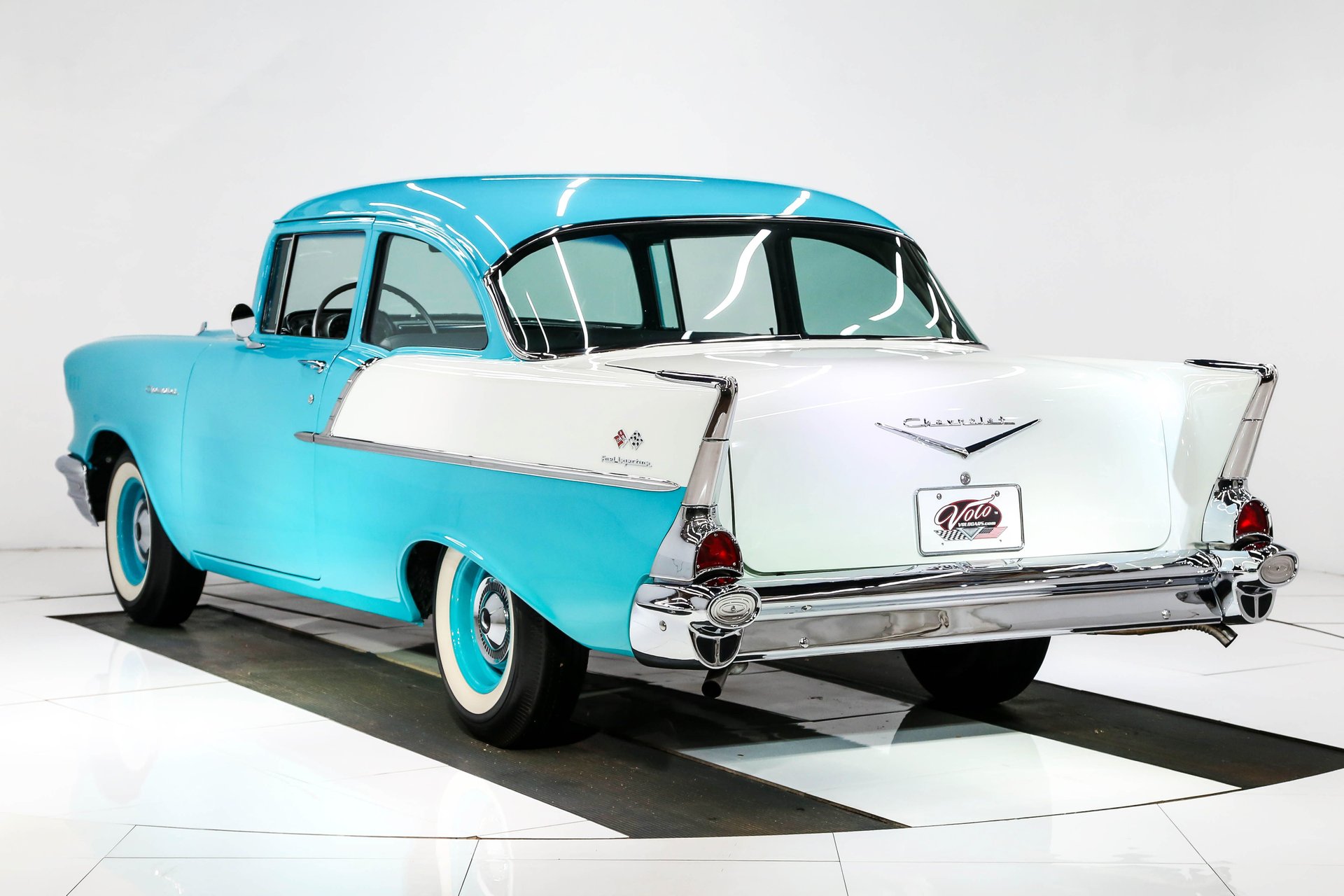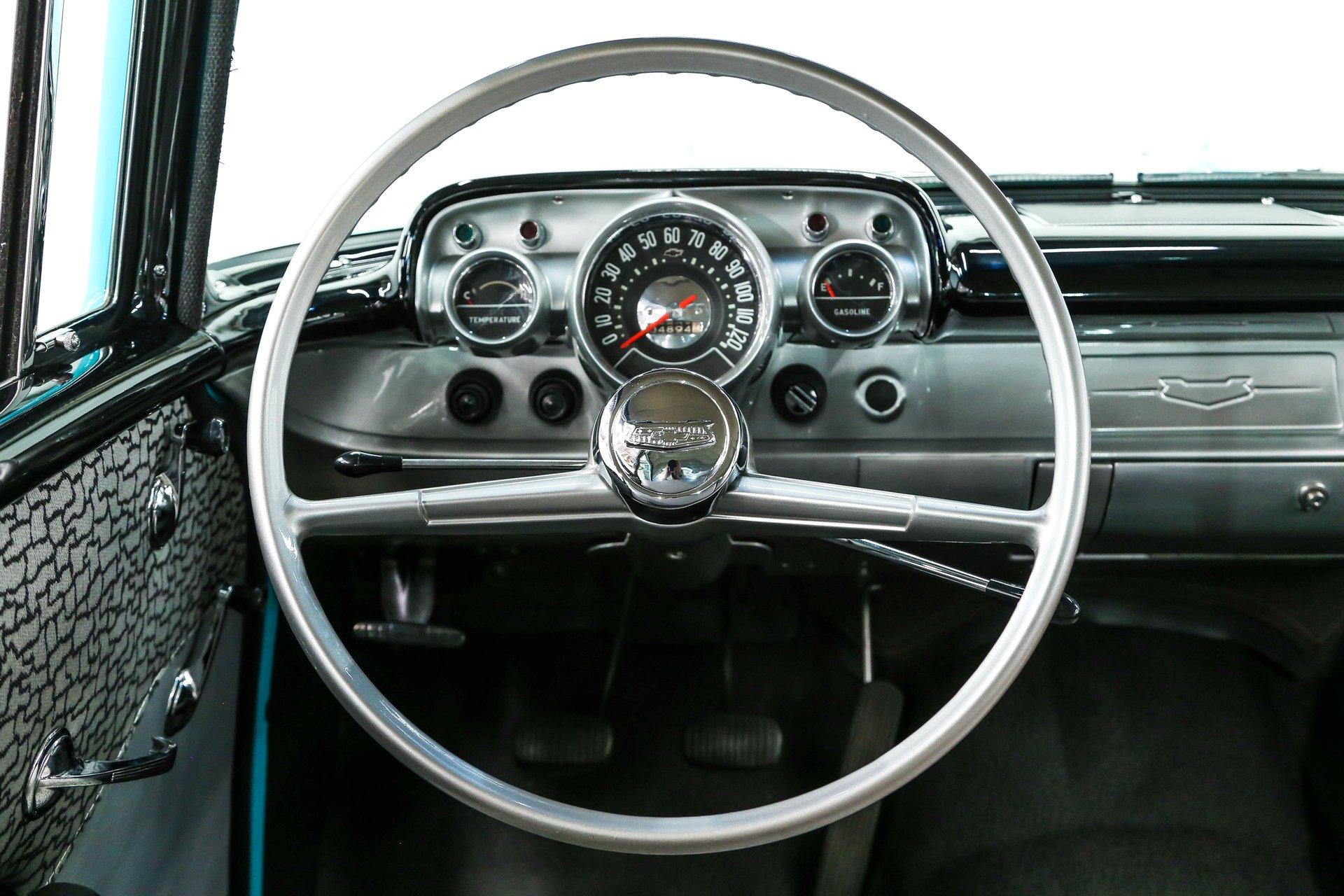The Chevrolet Tri-Five, which debuted in 1955, was an immediate success, selling more than 1.7 million cars in its first year on the market. With approximately 1.6 million examples in 1956 and an additional 1.5 million in 1957, the trend persisted.What gave the Tri-Five such a massive following? To begin with, it was one of the most attractive vehicles in showrooms and was also reasonably priced. Chevrolet also provided a wide range of trim levels and numerous body designs. For instance, the Tri-Five was offered in no less than 20 variations in 1957. The Nomad is the rarest trim, although the Bel Air is the most recognizable and sought-after, especially in Sport Coupe form.
The entry-level 150 and the mid-range 210 don’t get as much love as the Bel Air, but this doesn’t mean these trims do not include rare models. While the Nomad receives all the attention as the rarest 1957 Tri-Five, the Delivery Sedan and Utility Sedan versions of the 150 are almost as rare. The Delivery Sedan, a bare-bones two-door van, moved only 8,907 units.

Then there’s the Utility Sedan, a stripped-off two-door coupe produced in 8,817 examples. A rather unusual body style for the modern era, the Utility Sedan was designed with door-to-door retailers in mind. Sold without a rear seat, it provided extra luggage room behind the front bench. But while some customers purchased them as affordable haulers, others saw them as lightweight hot-rodding platforms.
Moreover, Chevrolet’s introduction of the fuel-injected 283-cubic-inch (4.6-liter) V8 in 1957 created the opportunity to pair the lightened Utility Sedan with a 283-horsepower engine. Not your average salesman’s rig, right? And a Tri-Five version only a few people know about. It’s also super rare because of the 1,530 “fuelie” Tri-Fives sold in 1957, only about 50 were 150 Utility Sedans. The Tropical Turquoise example you see here is one of them.
And this two-door sedan is special for several reasons. For starters, it’s one of only a few units that soldiered on into 2023 as a fully-restored classic with all-original sheet metal. The fuel-injected V8, which delivers one horsepower per cubic inch, a big deal back in 1957, is also of the numbers-matching variety.

And on top of being lighter than the usual 150, thanks to being devoid of a rear bench, carpet, and rear window roll-down mechanism, it was also ordered with a few extra delete options. Specifically, the original owner requested that the 150 come without a radio unit, heater, dashboard clock, and cigarette lighter. Additionally, the 283 mates to a close-ratio, three-speed manual, and a 4.11 rear end.
In all, it sounds like someone took his time to order a factory muscle car. And it’s amazing that it wasn’t raced and destroyed at the drag strip. But wait, that’s not all. This 150 also packs a rare NASCAR-spec distributor and a vacuum pump, which makes it a Black Widow in disguise.
If you’re unfamiliar with the name, the Black Widow was a series of 150 Utility Sedan “fuelie” cars built by the Southern Engineering Development Company (SEDCO). Operating out of the Nalley Chevrolet dealership in Atlanta, Georgia, SEDCO had an unusual amount of access to the company’s parts. The cars were put together as a way around the Automobile Manufacturers Association’s ban on factory-backed racing.
Unleashed on NASCAR tracks during the 1957 Grand National season, the Black Widown dominated the series despite the sanctioning body’s immediate ban on fuel injection. There are no records of how many Black Widows were built, but experts usually agree on six units, making it incredibly rare and valuable.
